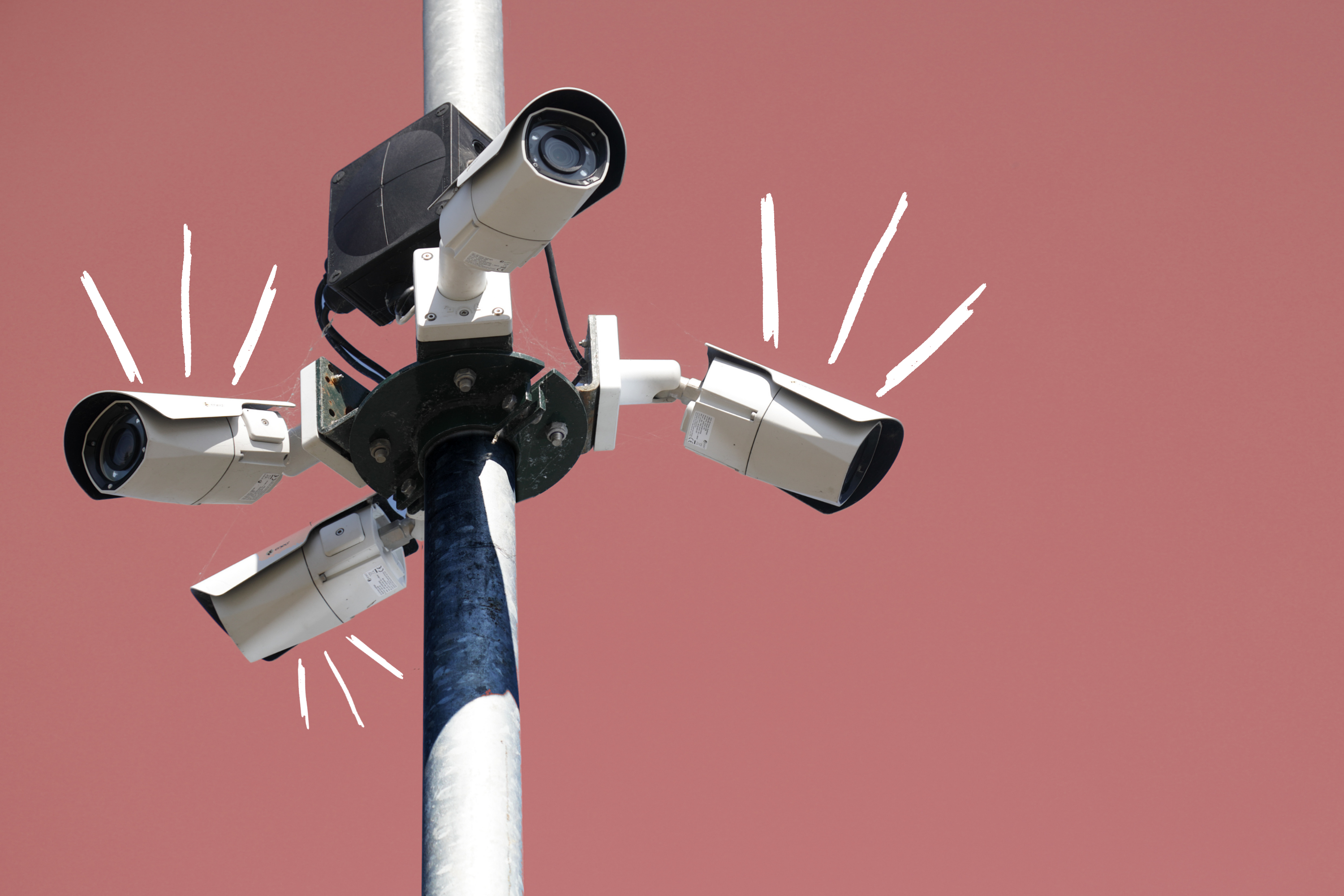What is coercive control? We asked domestic abuse experts how to spot the signs
The issue of coercive control has been brought to the forefront of the nation’s mind with the horrific storyline running on ITV soap Coronation Street.

What is coercive control? While many people have heard the term before, the issue was brought back to the forefront of the nation's attention recently with one of television's must-watch dramas.
Over 67 million people worldwide watched Netflix's Maid when it first arrived on the streaming service and it quickly became one of the most successful shows on the site. It follows the story of Alex, a young mother of two-year-old Maddy. The story centres on the struggles she faces after trying to escape the toxic, abusive relationship she had with Maddy's father, Sean. Alex is pushed to her limit one night and forced to flee with her daughter. She has no money, prospect of housing or a job. While initially difficult to watch, it's Alex's determination to fight for a better life for her daughter that led to the show receiving such rave reviews from both viewers and domestic abuse awareness campaigners alike.
But what many people were unaware of when the show aired is that the storyline is a lot closer to fact than fiction. But it's hardly surprising as up until recent years, awareness around coercive control has been limited at best.
What is coercive control?
Coercive control is an illegal pattern of behaviour that can include assault, threats, humiliation and intimidation with the aim to harm, punish or frighten someone else. "This controlling behaviour is designed to make a person dependent by isolating them from support, exploiting them, depriving them of independence and regulating their everyday behaviour," explain Women's Aid, a UK-based charity dedicated to raising awareness and giving support to those impacted by domestic abuse.
Coercive control is also an umbrella term for many forms of emotionally abusive behaviour - including gaslighting. Those who are experiencing coercive control may often feel:
- Isolated from their friends and family members
- Deprived on basic needs, including food and water
- That their time is being monitored
- That they are being monitored via online communication tools or spying software
- Deprived of access to support services, including medical services
- They are being controlled in everyday life with their movements dictated by another person. This includes where they can go, who they can see, what they can wear and when they can sleep
- Repeatedly put down, leading to feelings of worthlessness
- Humiliated, degraded or dehumanised
- Threatened or intimidated
- That their finances are being controlled
And as of 2015, it is a criminal offence to subject someone to coercive control. As the Rights of Women legal guide explains, to bring a case against a perpetrator you must be able to prove that they are both "personally connected" to you and their behaviour has had a "serious effect" on your daily life.
Was coercive control happening more in lockdown?
Yes - but not just coercive control. Experts have revealed that incidents of all forms of domestic abuse rose during the three coronavirus lockdowns of 2020 to 2021, with people forced to stay inside the house for many hours throughout the day - often with their abuser. As Sinead Cregan, director of development and innovation at Inspire North says, "Previously victims may have had some respite when the perpetrator was at work, or they were at work, but lockdown increased the time people spent together under one roof, with limited opportunities to leave."
GoodtoKnow Newsletter
Parenting advice, hot topics, best buys and family finance tips delivered straight to your inbox.
Refuge, another domestic abuse charity, reviewed the use of the National Domestic Abuse Helpline during the lockdown and found that usage was up by 61% between April 2020 and February 2021. From these calls, the charity made almost 4,500 referrals to secure refuges across the country and over 11,000 safety plans to help women and others escape domestic abuse.
But further heartbreaking statistics show that incidents of domestic abuse weren't only more common - but they increased in severity with the struggles of lockdown. “When it comes to coercive control, the lockdown meant that dangerous behaviours escalated quicker," Dr Emma Katz, an expert on coercive control and senior lecturer in Childhood and Youth studies at Liverpool Hope University, says. "We know that perpetrators like to be in control. Now, however, a big part of their normal lives are restricted. So in order to get back to their normal levels of control, they may impose stricter control on their families. And that’s a terrible problem for the victims. Normal escape routes that help victims to cope with perpetrators’ control aren't there anymore."
Signs of coercive control: how to spot it
Dr Katz warns that coercive control is a form of abuse that can often go undetected - even by the victim. "This is a problem that can often fly under the radar, or be dismissed as ‘relationship problems’. But coercive control is nightmarish. It’s an attack on your liberty, your autonomy, your ability to make decisions.”
Signs of coercive control include:
- Isolating you from your support system, e.g. friends and family
- Controlling your finances
- Threatening you (sometimes physically)
- Monitoring your time
- Monitoring your online life
- Depriving you of basic needs, such as food, and of essential services such as medical attention
- Being verbally abusive - humiliating or degrading you, or consistently putting you down
Elaborating, Dr Katz explains that it can feel like someone has ‘hijacked’ your life. She said, “Ordinary, everyday decisions are out of your hands. Like who to be friends with, who not to be friends with, how we want to present ourselves, how we want to dress, whether we want to do a certain job or not.
“The perpetrator doesn’t want a ‘partner’, or ‘children’, they want slave-like figures who are there to serve them," Dr Katz says. “And they gain compliance through an awful system of reward and punishment. There might be intermittent rewards to keep you hooked in, giving you a sense of hope and making you think, ‘Okay, things are not so bad’. But then you’ll also get punishment when you disobey the perpetrator’s rules and go against their regime of coercive control.”

Signs of coercive control can be very hard to spot, Credit: Getty.
Early warning signs
While anyone can face coercive control, at the hands of anyone, there can be some early warning signs in the first few weeks and months of meeting a new partner. “It’s easy for coercive control to escalate without the victim even realising what’s happening. When we’re talking about an adult perpetrator and an adult victim, the relationship might begin really quickly. The perpetrator seems to idolise you," Dr Katz said.
“Things move along really quickly because they’re keen to get you to commit to the relationship, fast. Importantly, the victim might not see this behaviour as a red flag. They might interpret it as, ‘He/she cares about me so much. It’s romantic’."
However, things can quickly escalate. “But then the perpetrator might start sending too many texts in a day, finding it annoying if you don’t reply or pick up the phone. They might suggest a joint bank account, making it harder for you to break away financially. They might also want to know precisely what you’ve spent your money on, demanding to see receipts," Dr Katz said.
How can coercive control impact children?
Lucy Hadley, Campaigns and Policy manager at Women's Aid, warns that children can also be victims of coercive control. She said, "For far too long, however, children have been seen as ‘witnesses’ to physical violence rather than as individuals impacted by the power and control in their home. We know that children do not only witness domestic abuse, they are survivors in their own right.
"Recent research suggests that children and young people experience forms of control similar to that inflicted on their survivor parent – including isolation from support, restricted freedoms and control of their activities."
And this can even extend beyond the time when a parent may have separated from their abuser. "The harm children experience can also continue after the parents have separated; child contact arrangements can be used by perpetrator of domestic abuse to continue controlling a mother and her children. This can have severe and long-lasting impacts on their safety and wellbeing," she told GoodtoKnow.
The issues with prosecution when it comes to coercive control
While strides in domestic abuse laws are being made, Dr Katz worries that too-lenient sentences for coercive control is a huge issue in stopping its occurrence. She said, “Sentences for coercive control are typically very low, with perpetrators getting a few months or a year or two on the back of horrific histories where they have psychologically tortured their victims for 15 years or more.
“The maximum you can get for coercive control is five years in prison. But many perpetrators don’t get that maximum, they get a couple of years at most."
According to a 2021 government review of the coercive control offence, while the number of coercive control offences that go on record have increased each year, the number of them that lead to a charge has decreased from an already-shockingly low 11% in 2017/18 to just 6% in 2018/19.
But this could change in the future as one country in the UK is getting ahead of the issue. Scotland recently brought in tougher punishments for coercive control. Dr Katz said, “In Scotland, a new domestic abuse bill came into force in 2018 which put coercive control right at the heart of the issue. And their maximum sentence is 15 years, which is so much better than five years when it comes to sending a serious message."
Women's Aid told GoodtoKnow that sentencing needs to begin to match the severity of the crime, urgently. Lucy Hadley said, "Sentencing for coercive and controlling behaviour must reflect that it is a serious crime. It can have severe and long-lasting impacts on survivors’ lives. Sentencing plays a vital role in holding perpetrators accountable for their actions and sending a clear message to the public that this behaviour is not acceptable.
"Women’s Aid remains highly concerned that there is still no national data collected on sentencing for domestic abuse, including coercive control, which we need in order to understand whether sentences are effective in tackling these crimes."
What steps do we need to take as a society to tackle it?
Sinead Cregan believes that more early education is important to help people in society - not only survivors - recognise coercive control as the horrific form of abuse it is. She said, "Education and awareness is crucial. We need more education so that people know what coercive control looks like, and what a healthy relationship should be. A national effort would make a huge difference, especially if this is part of the National Curriculum.

Credit: Getty
"We also need to get across the huge impact that coercive control has. Victims often have PTSD and hyper vigilance, sometimes for years after leaving the relationship."
Where and how to get help for coercive control
Recognising coercive control is one of the first steps to getting help.
If you feel you need help, you can call the National Domestic Abuse Helpline on 0808 2000 247.
The helpline is open 24/7. They can support you and advise you - without judgement - on what to do next. This is whether you've left your abuser, are planning or hoping to.
Call the National Domestic Abuse helpline 24/7 on 0808 2000 247
However, if you feel unable to pick up the phone, you can contact the helpline via message as well, here. The message will go a secure inbox which only the team can access. Leaving a message here won't leave any trace on your emails. They will also ask for the safest way to contact you, and the safest time, too. The helpline also reassures that they will not leave voicemails, for your safety.
Trusted, informative, and empathetic – GoodToKnow is the ultimate online destination for parents. At GoodtoKnow, our mission is 'simple': we're trying to make sense of parenthood. On the site, you'll find everything you need for a happy, healthy family life. Our huge archive of content includes more than 18,000 articles and 1,500 how-to videos. These include expert-backed advice features on parenting, dealing with relationship changes after having a baby, self-care for mums and managing your family finances. We also feature tried-and-tested product reviews and buying recommendations for every stage of family life - from prams and Moses baskets to birthday gifts and top toys.